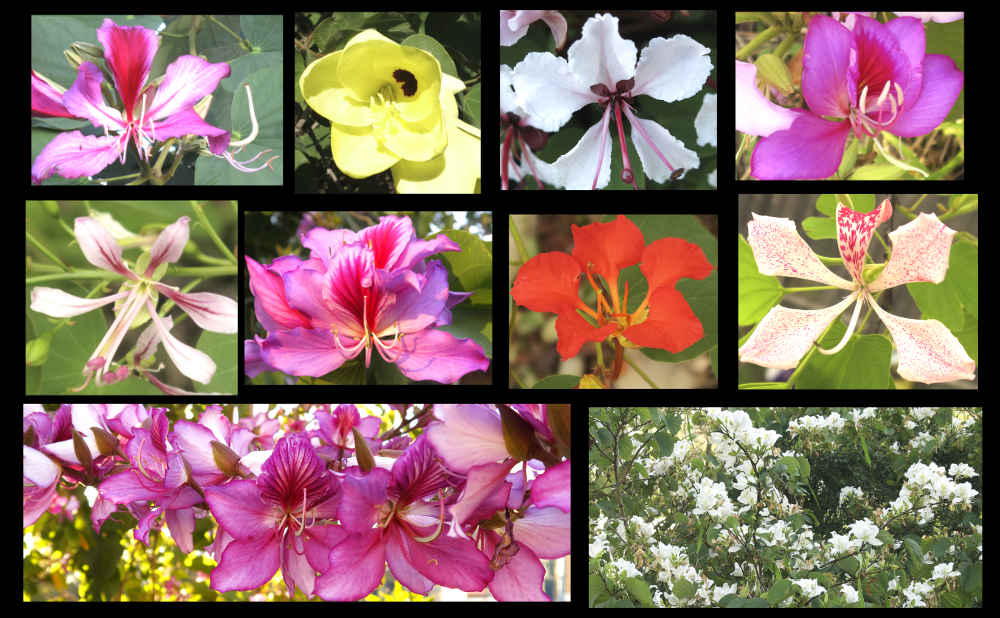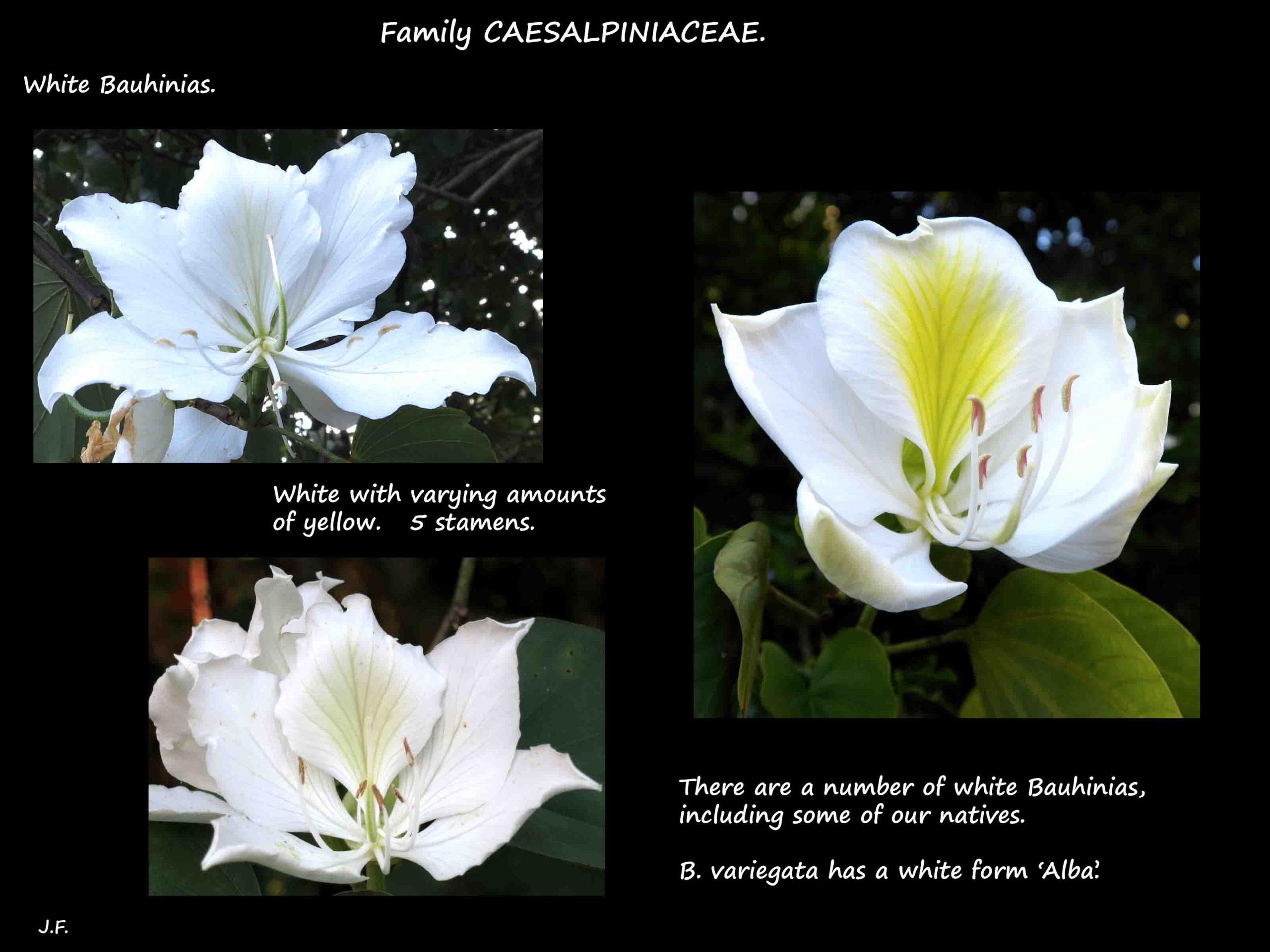Bauhinia.
In Family Caesalpinaceae there are around 300 species mostly from the tropics.
Many are cultivated as garden plants.
Australia has 6 or 7 species most of which have been cultivated.
They are characterised by bilobed leaves and orchid-like flowers.
The following is a description of some common features.
Most are small shrubs or trees up to 12 m high.
Some are tendril climbers or scramblers.
They can be evergreen or deciduous – often briefly.
New growth has a reddish-bronze tint.
There may be hairs on many parts – stems, leaves, inflorescences and fruit.
Older stems quickly become hairless.
Leaves are alternate on stems that can be slightly zigzaged.
Petioles vary from 1 to 4.5 cm long with a swelling at both ends.
There are linear or ovate stipules a few mms long.
They can be smooth or hairy and tend to fall off early.
Leaves are compound with 2 leaflets.
These may remain separate (bifoliate) but are typically fused (bilobed).
The degree of fusion varies with some leaves divided almost to the base and
others with just a notch at the tip.
Leaves can be round, ovate or elliptic and from 2.5 to 20 cm in size.
The leaflets may have an asymmetric base and a small appendage in the apical notch.
Where there are hairs they are mostly on the lower surface.
Terminal or axillary inflorescences may be a single flower or up to 10.
Individual flowers may or may not be on a stalk.
The inflorescence and flower stalks have dense brown hairs.
There are bracts at the base of the peduncle and bracteoles at the base of the flower stalks.
These are 2 to 7 mm long and linear to ovate.
The orchid-like flowers can be from 2.5 to 15 cm across.
Most are bisexual but some species have separate male and female flowers.
There are 5 sepals and petals with the bases fused to form a hypanthium up to 3 cm long.
This is a tapering or cylindrical tube, green or reddish and slightly ribbed lengthwise.
The inside of the tube is lined with nectar producing cells.
The 5 sepal lobes, up to 3 cm long, can be free or joined.
A common calyx is spathe-like with the sepals fused but split along one side.
With time this often bends backwards to lie along the hypanthium and/or flower stalk.
The sepals can be green, reddish or cream and have whitish or rust-coloured hairs externally.
The petals, from 1 to 5 cm long, can be ovate, oblong or obovate.
On narrow or clawed bases they may be of different sizes.
The broad end is often wavy or ruffled.
There may be hairs on the claws and parts of the expanded part, mainly externally.
Colours include white, cream, shades of pink, red and purple.
Some have yellow or orange.
There are commonly markings in a different colour especially on the upper petal.
Flowers may change colour as they age.
The stamens are variable in number, form and colour.
There can be 1 to 10 fertile stamens and from 0 to 9 staminodes.
Staminodes are typically 3 – 6 mm long and linear.
In unisexual flowers the males have stamens and the females only staminodes.
Up to 5 cm long, the stamens may be of similar or different lengths and free or joined.
The bases may be fused into a tube.
The smooth or hairy filaments can be white, pink or red.
The anthers are dorsifixed.
The superior ovary, up to 3 cm or so long, is on a stalk or gynophore.
The gynohore inserts into the inner surface of the hypanthium.
It can be smooth or hairy.
The ovary has hairs especially along the sutures.
There are commonly hairs towards the end to the style.
There may be glands on the ovary which has a single locule.
The fruit are thin pods that mature from green to brown and slightly woody.
Straight or slightly curved they can be up to 36 cm long.
The surface can have some hairs or be smooth.
There can be up to 16 flat brown seeds from 1 to 3 cm long.
J.F.



